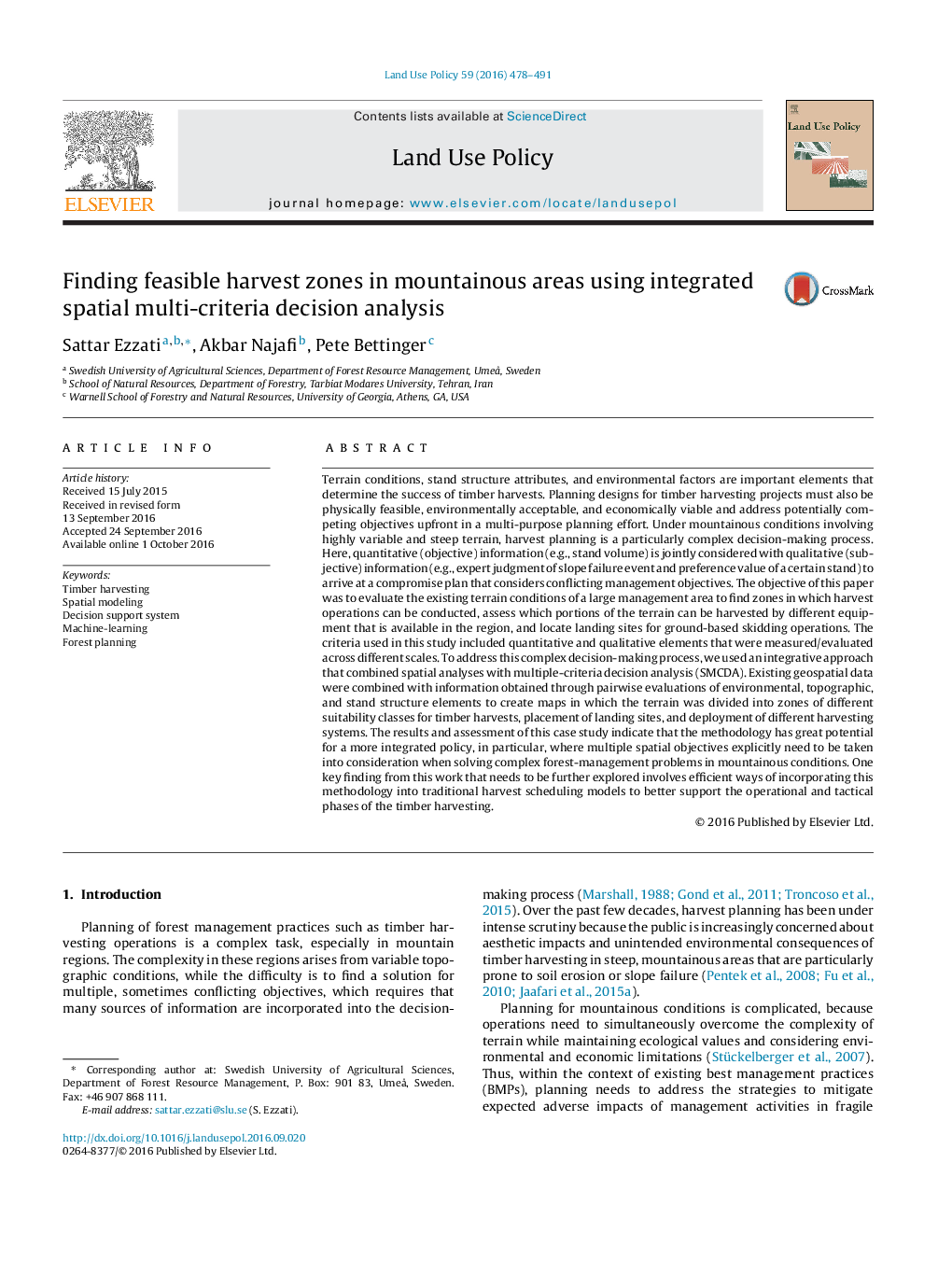| کد مقاله | کد نشریه | سال انتشار | مقاله انگلیسی | نسخه تمام متن |
|---|---|---|---|---|
| 6461590 | 1421824 | 2016 | 14 صفحه PDF | دانلود رایگان |
- An integrated approach is presented which has the potential to inform harvesting operations based on a variety of criteria including site conditions, environmental factors and stand structure attributes.
- A set of possible criteria were identified through a participatory process for identifying harvestable zones, locating landings and assigning available harvesting systems to different harvestable zones.
- We developed this process as an auxiliary management tool to dissect the current condition of landscape and to simulate relevant activities across the planning horizon.
Terrain conditions, stand structure attributes, and environmental factors are important elements that determine the success of timber harvests. Planning designs for timber harvesting projects must also be physically feasible, environmentally acceptable, and economically viable and address potentially competing objectives upfront in a multi-purpose planning effort. Under mountainous conditions involving highly variable and steep terrain, harvest planning is a particularly complex decision-making process. Here, quantitative (objective) information (e.g., stand volume) is jointly considered with qualitative (subjective) information (e.g., expert judgment of slope failure event and preference value of a certain stand) to arrive at a compromise plan that considers conflicting management objectives. The objective of this paper was to evaluate the existing terrain conditions of a large management area to find zones in which harvest operations can be conducted, assess which portions of the terrain can be harvested by different equipment that is available in the region, and locate landing sites for ground-based skidding operations. The criteria used in this study included quantitative and qualitative elements that were measured/evaluated across different scales. To address this complex decision-making process, we used an integrative approach that combined spatial analyses with multiple-criteria decision analysis (SMCDA). Existing geospatial data were combined with information obtained through pairwise evaluations of environmental, topographic, and stand structure elements to create maps in which the terrain was divided into zones of different suitability classes for timber harvests, placement of landing sites, and deployment of different harvesting systems. The results and assessment of this case study indicate that the methodology has great potential for a more integrated policy, in particular, where multiple spatial objectives explicitly need to be taken into consideration when solving complex forest-management problems in mountainous conditions. One key finding from this work that needs to be further explored involves efficient ways of incorporating this methodology into traditional harvest scheduling models to better support the operational and tactical phases of the timber harvesting.
Journal: Land Use Policy - Volume 59, 31 December 2016, Pages 478-491
